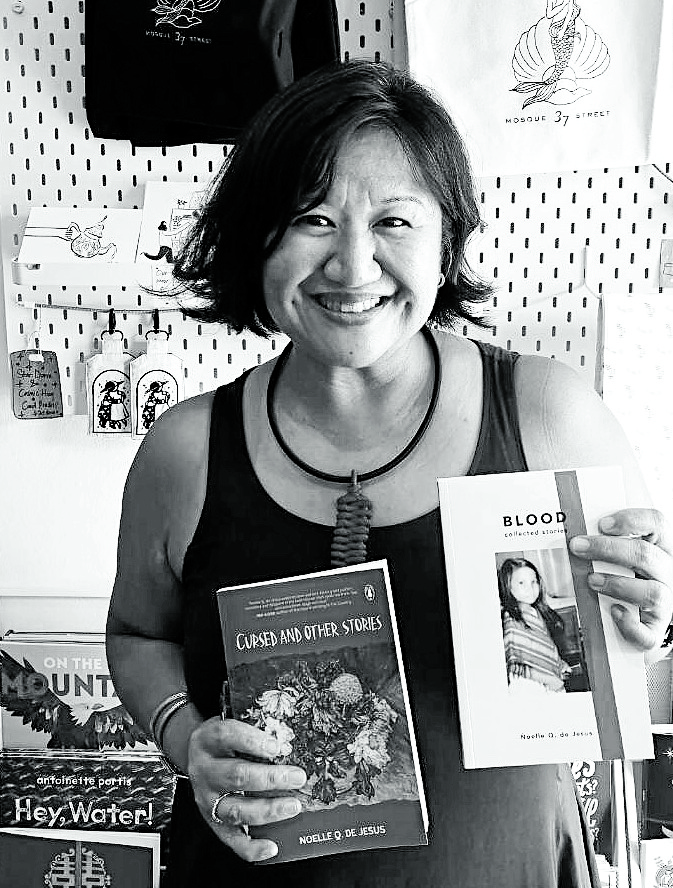
At the end of the day, I believe that for most Filipinos, the most common, needling taste-craving is fish. Wait, hear me out. Not just fish. And certainly not the fish fillet you find in the frozen food section of the supermarket, which to my mother’s mind is not fish at all, and can only be served with approval if it’s prepared, steeped in a saucy stew or a spicy curry—Thai or Sri Lankan or Maldivean or South Indian, in particular, is lovely. Pinoy stews like paksiw or sinigang, to her mind, still demand a fresh, whole fish—tail, bones, head, eyes and all.
The fish that most Filipinos look for is none other than fried dried fish. It is the brazen salt shot to the tongue that is desired, satisfaction guaranteed of fried dried—salted or smoked. The fish that people look for when they have that peculiar, particular, gnawing, anytime-striking, wake-up-the-taste-buds kind of hunger. This is probably why it’s most often served in the morning. It makes sense. However, in my house of cavalier eating, we like our breakfast for lunch and sometimes dinner—a platter of fried tuyo or danggit or lamayo alongside scrambled eggs and garlic-fried rice, with sides of sliced cucumber and chopped tomato, is widely regarded as a meal fit for . . . well, kings.
When you see the word “fish,” what is the picture that appears in your mind? Once you get past the animation (Dory and Nemo) or illustration (the fish you draw with a single stroke of a pen that never leaves the page, except for the marks you make for the eyes, mouth and gills), what do you think of? Me, I think of danggit, tuyo or tinapang bangus. Of late, I think of Pancake House’s Tinapang Bangus, which is a plate to delight anyone, frankly. It is distinguished by its fleshy fresh, deboned milkfish, smoked to aromatic heights, then fried crisp in its skin, boiled rice shaped by a bowl, topped with an egg fried gently and nestled against a dish of chopped green mango, onion and tomato.
I feel this way about dried fish, and I persist in the belief that I am not alone.
Don’t people willfully fry tuyo in kitchens abroad, regardless of what the neighbors might say, lighting candles to cover up the smell? Tuyo (or herring) was my go-to when I didn’t know what to make for a solo evening meal. But danggit is the gold standard— young rabbit fish or spinefoot. Trust Filipinos to be complicated with nicknames, calling an adult fish a name different from when it is young and dried, smoked, salted. The adult rabbit fish is samaral or kitang. I am partial to fried daing na pusit, but I am alone in this at home. Recently, we were delighted to discover lamayo.
Rabbit fish
Now, I was under the impression that lamayo was an entirely different fish. It isn’t. Lamayo refers to the same small, young or slightly bigger but still small, adolescent, rabbit fish that is taken through a different process—the fish is split, dried only in part—about a third of the way through, and then marinated in vinegar and pepper. The result is a tasty, fishier, more filling fish with an al dente, fleshy bite, no less compelling than its crisp dried sibling. The humble rabbit fish hops into a number of guises.
Such is the power of the small, dried fish. I imagine the fish Jesus cooked for the apostles that morning on the beach was lamayo. Or the fish that He multiplied to feed 500 might have also been a small, salted fish—after all, a little goes a long way with dried fish. One’s rice bite-to-fish bite ratio can easily be three, even four to one, when you get down to it. What will wake the taste buds? Small fish, smoked, dried or salted, all of the above.
My youngest sister spent six days in the hospital for chemotherapy. We knew the medicine, necessary as it is, might wreak havoc, alter her energy levels, her immune system, her very taste buds. We were ready to leap to respond to any of her food requests. After one day of hospital-bland undying chicken dishes, my mother sent food cooked from home, fresh cooked green vegetables, sliced fruit. We also brought her offerings from nearby: Max’s sizzling tofu. Shakey’s Fried Calamari.
On the Saturday morning my sister was discharged from her nth in-hospital chemo session, my mother sent a text: what do you want for lunch?
My sister’s answer: “Danggit, please. Rice.” Nothing else. Here is a plate of small but real comfort. It is food to feel grateful for. In trying times, a plate of dried, salted fish and rice can make you feel most joyfully blessed. —CONTRIBUTED













































